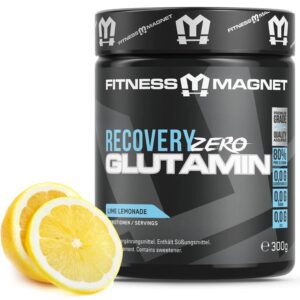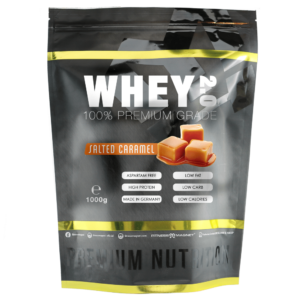Seit Jahren treibt kaum ein Thema die Geister der Trainierenden derart um, wie die Diskussion rund um die Effektivität maschinengestützter Workouts, gegenüber der des Trainings mit freien Gewichten. Insbesondere wenn es um die Auswirkung auf die Muskelhypertrophie geht, herrscht eine wahre Eiszeit zwischen den verfeindeten Lagern.
Befürworter der freien Übungen schwören unentwegt auf die Macht des Eisens, denn bereits Berend Breitenstein, seines Zeichens Gründer der „German Natural Bodybuilding & Fitness Federation“ pflegte zu sagen, „dass es nichts Besseres zum Aufbau massiver Muskulatur gäbe als das gute alte Eisen“. Ausgewiesene Verfechter der Verwendung von Trainingsmaschinen treten Aussagen wie diesen entschlossen entgegen und stützen ihre Argumentation vor allem darauf, dass durch die gezielte Isolation einzelner Muskelpartien ein größerer Zuwachs an Muskulatur erreicht werden kann. Zurecht stiftet dieser Glaubenskrieg nicht nur unter Trainingsanfängern gehörige Verunsicherung, denn selbst die Sportwissenschaft konnte bisher keine eindeutigen universell gültigen Ergebnisse liefern.
Die Königsdisziplin des Fitnesssports
Freie Übungen, zu denen auch die sogenannten Bodyweight exercises wie Klimmzüge und Liegestütze gehören, sind nicht zu Unrecht auch als Königsdisziplin des Fitnesssports bekannt. Insbesondere komplexe Verbundübungen wie Kniebeugen, Kreuzheben und Power Cleans erfordern durch die Vielzahl der beteiligten Gelenke und Muskelpartien ein erhebliches Maß an Körperbeherrschung. Weiterhin garantieren sie während der Ausführung einen natürlichen Bewegungsradius, der sich durch den Athleten jederzeit variieren lässt. Dementsprechend gleichen die Bewegungsabläufe der frei durchgeführten Übungen sehr denen anderer Sportarten, sodass Sportlern verschiedenster Disziplinen davon profitieren können. Ursächlich ist die verbesserte intermuskuläre Koordination, also die Zusammenarbeit der beteiligten Muskelpartien, die neben der Hypertrophie hauptverantwortlich für den Kraftzuwachs ist. Da die Hantel während dem gesamten Bewegungsablauf ausbalanciert werden muss, beanspruchen freie Übungen tiefer liegende synergistische Hilfsmuskeln besonders stark. Darüber hinaus ist beim Training mit freien Gewichten zu beachten, dass eine saubere Technik oberste Priorität hat, denn andernfalls drohen vor allem unerfahrenen Trainierenden schmerzhafte Verletzungen. Besonders häufig treten in diesem Kontext Schulterblessuren wie Schleimbeutel- oder Sehnenentzündungen auf, die meist auf eine unsaubere Ausführung mit einem zu hohen Gewicht zurückzuführen sind. Insbesondere unerfahrenen Athleten ist anzuraten sich die korrekte Technik durch einen kompetenten Trainer vorführen zu lassen und erst das Trainingsgewicht zu erhöhen, wenn diese hundertprozentig sitzt.
Maschinen erleichtern den Einstieg
Vor allem Trainingsanfängern wird zu Beginn ihrer Studiokarriere zur Verwendung von Trainingsmaschinen geraten, was von erfahrenen Athleten oftmals mit einem Lächeln bedacht wird. Doch diese Geräte haben ihre Daseinsberechtigung und sind bei Weitem besser als ihr Ruf. Speziell Neulingen erleichtern qualitativ hochwertige Geräte den Einstieg in den Fitnesssport, da sie in ihrer Benutzung nahezu selbsterklärend sind. Weiterhin ist sowohl die Position des Trainierenden auf dem Gerät als auch der Bewegungsradius von der Maschine vorgegeben, sodass einzelne Muskelgruppen isoliert belastet werden. Gleichzeitig reduziert sich das Verletzungsrisiko durch den geführten Bewegungsablauf erheblich. Aufgrund dieser Tatsache eignet sich das Maschinentraining ebenfalls für die Rehabilitation nach Verletzungen, sodass das ursprüngliche Leistungsniveau schonend und zeitnah zurückgewonnen werden kann. Indes wissen auch professionelle Bodybuilder die Vorzüge von Trainingsmaschinen zu schätzen. Bedingt durch die Isolation des Zielmuskels, wird dieser maximal belastet, was nicht nur einen erheblichen Hypertrophiereiz setzt, sondern auch die intramuskuläre Koordination, also das Zusammenspiel der Muskelfasern schult. Folglich ist es durch die Verwendung von Maschinen möglich auch ohne Trainingspartner, mit hohen Gewichten zu trainieren und den Zielmuskel an seine Leistungsgrenze zu treiben. Ein beliebter Vertreter ist die Beinpresse, an der der Trainierende weitgehend gefahrlos an sein Limit stoßen kann. Weiterhin können durch maschinengestütztes Training optische Defizite einzelner Muskelpartien systematisch beseitigt werden. In diesem Kontext ist beispielsweise der Beinstrecker zu nennen, der vor allem den inneren Quadrizepskopf trainiert. Allerdings existiert im alltäglichen Leben kein entsprechendes Bewegungsmuster, sodass die erworbene Kraft nicht vollständig ausgeschöpft werden kann.
Freie Übungen vs. Maschinen
Da sich keine pauschale Aussage darüber treffen lässt, welche Trainingsmethode effektiver ist, ist eine genaue Betrachtung sowohl der Zielsetzung als auch des Erfahrungsstandes eines Trainierenden grundlegend. Gerade das Training mit freien Gewichten ermöglicht es den Körper dank freier Bewegungsmuster so einzusetzen, wie er von der Natur konzipiert wurde. Im Gegensatz dazu ist die Bewegungsfreiheit an Maschinen stark eingeschränkt, was zwar die falsche Übungsausführung verhindert, jedoch gleichsam tiefer liegende Hilfsmuskulatur außen vor lässt. In diesem Fall ist zwar das Wachstum beziehungsweise eine Kraftsteigerung des Zielmuskels zu verzeichnen, allerdings kann dies zu Haltungsschäden aufgrund verkümmerter Tiefenmuskulatur führen. Für Trainierende die einen athletischen Körper aufbauen und die gewonnene Kraft aktiv im Rahmen einer Sportart nutzen wollen, führt also kein Weg an freien Übungen vorbei. Gewiss geht es den meisten Bodybuildern hauptsächlich um die Optik ihres Körpers und nicht primär um dessen Funktionalität, dennoch trainieren auch sie nicht ausschließlich an Maschinen, sondern ergänzen ihren Trainingsplan lediglich gezielt mit Geräten, um Schwachstellen zu beseitigen. Blutige Anfänger profitieren jedoch stark vom Training an Geräten, da sich dieses aufgrund der geführten Bewegung sehr sicher gestaltet und sich somit ein Fundament an Kraft und Grundmuskulatur aufbauen lässt. Nach einigen Wochen jedoch empfiehlt sich auch hier die Ergänzung durch freie Übungen, da die fehlende Hilfsmuskulatur auch in diesem Fall die Verletzungsgefahr erheblich steigert. Ein weiterer Vorteil der freien Übungen gegenüber den Maschinen ist schlichtweg die schier unbegrenzte Zahl an Übungen, die bereits mit Kurz- und Langhanteln ausgeführt werden können. Dies spart vor allem Zeit, denn zu Stoßzeiten ist es keine Seltenheit, gut und gerne zehn Minuten vor einem bestimmten Gerät warten zu müssen.
Uneinigkeit in der Sportwissenschaft
In Anbetracht der hitzigen Diskussionen, die seit jeher zu diesem Thema geführt werden, schickt sich auch die Sportwissenschaft auf Basis von Untersuchungen an, Klarheit zu schaffen. Es existieren zwar zahlreiche Studien, jedoch kommen diese meist zu völlig unterschiedlichen Resultaten im Hinblick darauf, welche Trainingsmethode effektiver ist. Dies ist darauf zurückzuführen, dass das Studiendesign teils stark voneinander abweicht und Quervergleiche somit schwer zu ziehen sind. Eine von der Oregon State University im Jahr 2000 durchgeführte Studie konnte zumindest bestätigen, dass freie Übungen sowohl die Tiefenmuskulatur als auch das Nervensystem in größerem Umfang reizen als das maschinengestützte Training. Weiterhin ist auch die Erhöhung der funktionellen Leistungsfähigkeit der Muskulatur durch die komplexen Bewegungsabläufe im Rahmen des Trainings mit freien Gewichten, im Jahr 1998 durch eine wissenschaftliche Analyse attestiert worden. Eine Differenz zwischen den beiden Trainingsmethoden, speziell im Bezug auf die Hypertrophie konnte allerdings bis heute nicht festgestellt werden, auch wenn eine Studie der University of Saskatchewan 2008 belegte, dass das Ausführen freier Übungen eine erhöhte Testosteronausschüttung nach sich zieht.
An freien Übungen führt kein Weg vorbei
Nicht zuletzt aufgrund der unklaren Studienlage kann keine eindeutige Entscheidung gefällt werden, welche Methode die effektivere rein im Bezug auf den Muskelaufbau ist. Grundlegend gilt jedoch, dass das gute alte Eisen die Basis eines erfolgreichen Trainings ist. Maschinen sollten lediglich der Ergänzung des Trainingsplans dienen, insbesondere um muskuläre Defizite auszugleichen. Reines Gerätetraining ist lediglich Trainingsanfängern in den ersten Wochen ihrer sportlichen Aktivität zu empfehlen. Weiterhin haben Maschinen im Rahmen des Rehabilitationstrainings ihre Daseinsberechtigung, da sie den Betreffenden bereits nach kurzer Zeit den Wiedereinstieg in den Sport ermöglichen. Gesunder und ernsthafter Muskelaufbau bedingt allerdings die Ausführung komplexer Übungen wie Kniebeugen, Kreuzheben und Bankdrücken.

